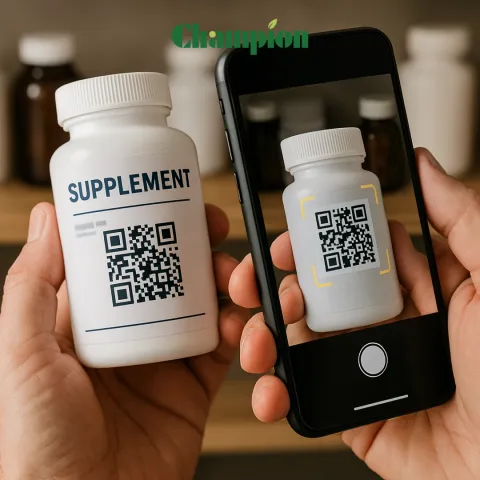Blog
29.Aug.2025
Navigating the Korean Supplement Market: Trends, Channels & OEM Insights

Introduction
Korea’s wellness transformation is rewriting the playbook for global nutraceuticals. In 2025, the South Korean supplement market is valued at $4.1B and growing at over 10% CAGR, led by high consumer sophistication, a rapidly aging population, and explosive demand for innovative, K-wellness-inspired products. This article unpacks the hottest Korean supplement market trends, must-watch ingredients, go-to-market strategies, and OEM opportunities—making it an essential reference for brands, manufacturers, and investors targeting Korea’s high-potential, fast-evolving marketplace.Market Outlook & Growth Drivers
- The Korean dietary supplements market is forecast to reach $5.3B by 2035, powered by demographic shifts, health awareness, and a culture of preventive care.
- Key drivers:
- Population aging—supplements for joints, cognition, bone health.
- Rising lifestyle diseases—diabetes, obesity, hypertension increasing need for health management.
- Personalized wellness surge—AI and DNA-based nutrition advise highly tailored supplement regimens.
- Functional food OEM/ODM market alone was valued at $20.5B in 2024, projected to reach $35B by 2033—underscoring Korea’s global manufacturing clout.
“Korea’s OEMs don’t just comply—they anticipate trends, innovating with fermented botanicals, designer probiotics, and beautiful delivery forms. This agility is why multinationals call Korea their Asian innovation hub.”— J. Kim, Director, Seoul NutraLabs
Top-Performing Supplement Segments & Ingredients
Most Popular Categories
- Immunity & Energy: Red ginseng, vitamins, minerals, herbal adaptogens
- Beauty-from-Within: Collagen, probiotics, hyaluronic acid, antioxidants
- Gut & Cognitive Health: Strain-specific probiotics, omega-3s, botanicals (e.g., Taheebo, lemon verbena)
- Personalized Nutrition: Pill-and-shot packs, ingredient stacks, DNA-driven options
High-Demand Ingredients
| Ingredient | Market Value (2024, 100M KRW) | Benefits |
| Red Ginseng | 5,896 | Immunity, blood circulation, memory |
| Vitamins & Minerals | 3,817 | General health, deficiency prevention |
| Probiotics | 3,642 | Gut health, immunity, gut-skin axis |
| EPA/DHA Oil | 2,233 | Brain, cardiovascular |
| Protein | 807 | Recovery, senior wellness |
Trends Shaping the Korean Market
- Personalized Nutrition: Tech-savvy, health-conscious consumers drive demand for AI-guided, DNA-based, and stackable supplement regimens—making Korea a leader in “smart supplementation”.
- Clean-Label & Plant-Based: Shoppers scrutinize sourcing, certification, and transparency. Clean, natural, and minimal labels are baseline expectations.
- Fast Innovation: Pill-and-shot packs, multi-function supplements, and flavor-rich gummies, powders, and drinks are in demand and rapidly iterating.
- Retail Channel Evolution:
- E-commerce and D2C platforms win with speed, education, and influencer engagement.
- Pharmacies/health chains provide trust—Korean shoppers value visible, accessible expert advice.
Manufacturing Alignment & OEM/ODM Opportunity
-
Why Korea?
- Korea’s OEM/ODM ecosystem enables both emerging and global wellness brands to access premium, high-efficacy, and regulation-compliant manufacturing without major capex investment.
- Facilities are known for rapid scale, advanced R&D, and a strong regulatory track record (HACCP, GMP, functional claims).
-
OEM Success Factors:
- Speed-to-market capability—frequent trend launches and quick iteration.
- Advanced formulation: probiotics, fermentation tech, microencapsulation.
- Branding expertise—packaging innovation and design for K-trend appeal.
“Our Koream OEM accelerated time-to-market on our probiotic beauty gummies. Clean, traceable ingredients and meticulous compliance let us export across East Asia.”— S. Lee, Global Health Brand Manager
Go-to-Market Tips for Korea
- Align with K-wellness: Incorporate popular functional botanicals like red ginseng or local adaptogens.
- Leverage Digital CX: Build community using Kakao, Instagram, Naver, and micro-influencers—Korean consumers research extensively and value authentic reviews.
- Prioritize Compliance: Work only with OEM/ODM partners with up-to-date HACCP, GMP, and functional food certifications. Regulatory environment is robust and evolving, with risks in non-compliance.
- Highlight Personalization: Tailor SKUs for gender, age group, and lifestyle; “one-size-fits-all” is outdated.
- Showcase Packaging: The Korean market values branded design, convenient pill-and-shot formats, and eco-friendly packaging for premium shelf appeal.
Channel Strategy: Where and How Koreans Buy Supplements
- Online Retail: 64% of buyers use e-commerce for selection, price, community reviews, and home delivery.
- Pharmacies/Clinics: Remain strong, especially for high-trust, functional or OTC supplements.
- Health Specialty Chains: Growing, driven by new product launches and educational shopping environments.
- Influencer-Led Content: TikTok, YouTube, and Instagram content drive trial and repeat rates, making digital presence essential.
FAQs: Korean Supplement Market
Q: Is red ginseng still the king of Korean supplements?A: Yes—red ginseng remains dominant for immunity and energy, but plant-based and beauty-from-within ingredients are narrowing the gap.
Q: What are the main compliance hurdles?
A: Strict labeling, proof of benefit for functional ingredients, regular audits. Partner with a Korean OEM experienced with these requirements.
Q: How important is digital marketing?
A: Critical—Korean consumers trust peer reviews, educational videos, and influencer endorsements over traditional ads.
Conclusion
Korea stands at the cutting edge of global supplement trends, led by a blend of technical innovation, digital-savvy marketing, health-conscious buyers, and world-class OEMs. Brands that build for Korean tastes—leveraging trending ingredients, digital engagement, and manufacturing alignment—will capture this dynamic, rapidly growing market.Ready to unlock the Korean supplement market?
Connect with a Korea-focused OEM for compliance, speed, and ingredient expertise—and surf the next wave of wellness growth.



















